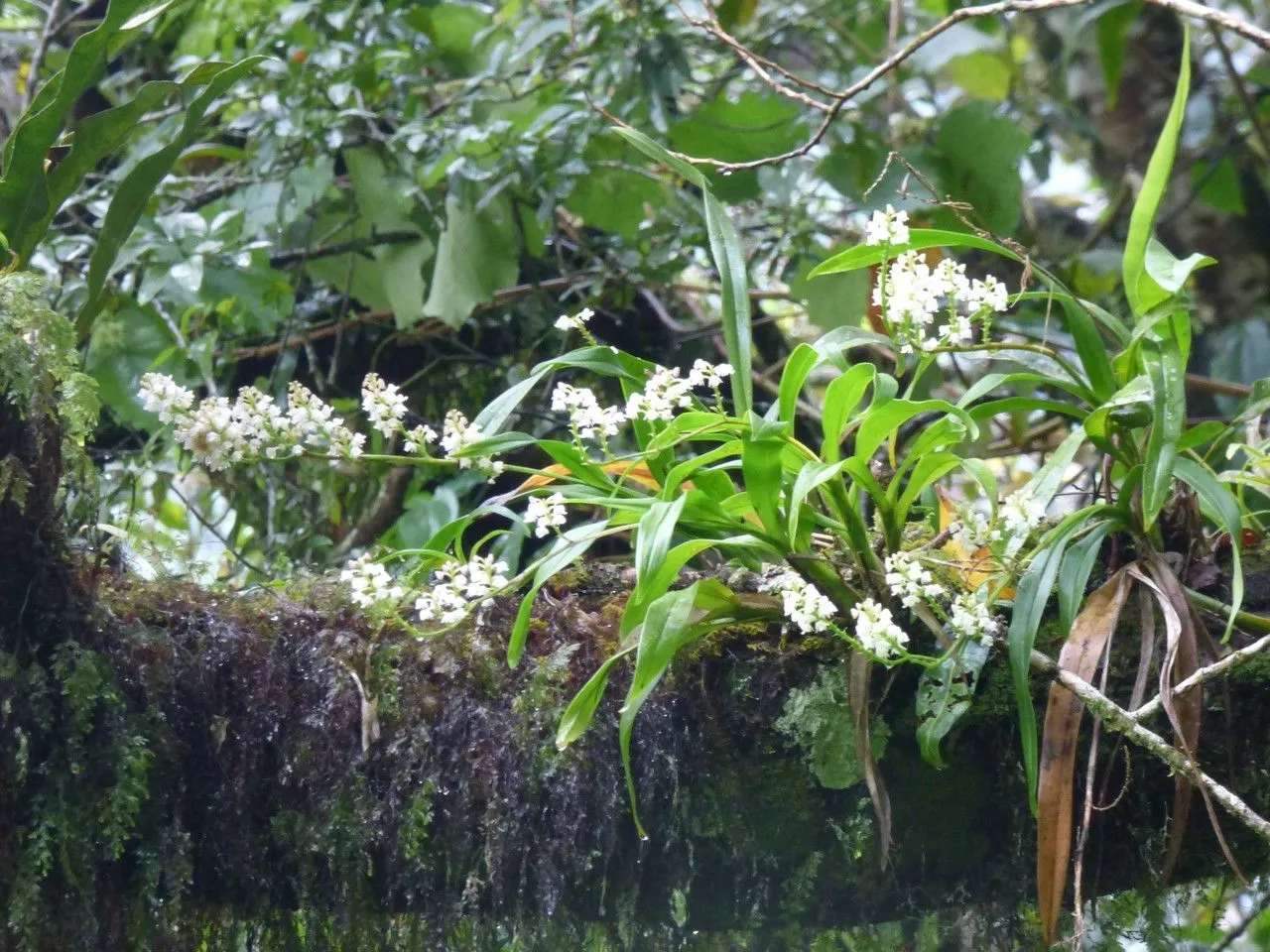
Author: (Jacq.) Garay & H.R.Sweet
Bibliography: Orquideologia 9: 206 (1974)
Year: 1974
Status: accepted
Rank: species
Genus: Polystachya
Vegetable: False
Observations: Tropics & Subtropics
The Greater Yellowspike Orchid, scientifically known as Polystachya concreta, is a captivating species within the intricate and diverse Orchidaceae family. This resilient orchid thrives predominantly in tropical and subtropical regions, showcasing a fascinating adaptability to various warm climates.
First documented in scientific literature as Polystachya concreta by (Jacq.) Garay & H.R.Sweet in 1974’s Orquideologia journal, the Greater Yellowspike Orchid has since enticed botanists and plant enthusiasts with its unique characteristics and widespread presence. Its vibrant, yellow-hued flower spikes are not only visually striking but also contribute to its common name, elegantly reflecting its essential attributes.
The habitat of Polystachya concreta spreads across a vast array of environments within the tropics and subtropics. This distribution underscores the orchid’s remarkable ability to flourish in differing conditions, from humid rainforests to more open, sunny locales. Its propensity to adapt makes it a brilliant subject for studying ecological versatility among orchid species.
In botanical circles, the Greater Yellowspike Orchid holds a special place due to both its aesthetic appeal and scientific value. The structure of its blooms, with multiple flowers often arranged in characteristic spikes, displays the intricate evolutionary advancements within its genus. These features not only elucidate the complexity of orchid pollination strategies but also provide insight into the broader ecological interactions where these orchids reside.
Observations and studies of Polystachya concreta contribute significantly to our understanding of plant biodiversity within the Orchidaceae family. Its presence in various tropical and subtropical ecosystems offers a glimpse into the delicate balance of these environments and the plant’s role within them.
The Greater Yellowspike Orchid remains an emblem of both natural beauty and botanical curiosity, continually inviting further exploration and admiration from those who encounter it amidst its diverse habitat.
Eng: greater yellowspike orchid, great yellow spike orchid, yellow spike orchid, yellow helmet orchid, greater yellow-spike orchid
En: Greater yellowspike orchid, Great yellow spike orchid, Yellow spike orchid, Yellow Helmet Orchid, Greater Yellow-spike Orchid
Taken Jan 27, 2020 by Reis Flor Moreira (cc-by-sa)
Taken May 20, 2017 by laurence comte (cc-by-sa)
Taken Sep 30, 2018 by Hugo SANTACREU (cc-by-sa)
Taken Sep 30, 2018 by Hugo SANTACREU (cc-by-sa)
Taken Feb 19, 2017 by Hugo SANTACREU (cc-by-sa)
Taken Sep 26, 2022 by Pizza Berta (cc-by-sa)
Taken Sep 30, 2018 by Hugo SANTACREU (cc-by-sa)
Taken Feb 19, 2017 by Hugo SANTACREU (cc-by-sa)
Taken Sep 30, 2018 by Hugo SANTACREU (cc-by-sa)
Taken Sep 16, 2018 by Hugo SANTACREU (cc-by-sa)
© copyright of the Board of Trustees of the Royal Botanic Gardens, Kew.
© copyright of the Board of Trustees of the Royal Botanic Gardens, Kew.
© copyright of the Board of Trustees of the Royal Botanic Gardens, Kew.
Taken Feb 19, 2017 by Hugo SANTACREU (cc-by-sa)
Taken Mar 23, 2018 by Hugo SANTACREU (cc-by-sa)
Taken Sep 30, 2018 by Hugo SANTACREU (cc-by-sa)
Taken Feb 19, 2017 by Hugo SANTACREU (cc-by-sa)
Taken Mar 23, 2018 by Hugo SANTACREU (cc-by-sa)
Taken Nov 3, 2022 by Marc Roussin (cc-by-sa)
Growth habit>: Forb/herb
Family: Myrtaceae Author: (F.Muell.) K.D.Hill & L.A.S.Johnson Bibliography: Telopea 6: 402 (1995) Year: 1995 Status:…
Family: Rubiaceae Author: Pierre ex A.Froehner Bibliography: Notizbl. Bot. Gart. Berlin-Dahlem 1: 237 (1897) Year:…
Family: Sapindaceae Author: Koidz. Bibliography: J. Coll. Sci. Imp. Univ. Tokyo 32(1): 38 (1911) Year:…
Family: Asteraceae Author: A.Gray Bibliography: Pacif. Railr. Rep.: 107 (1857) Year: 1857 Status: accepted Rank:…
Family: Fabaceae Author: Medik. Bibliography: Vorles. Churpfälz. Phys.-Ökon. Ges. 2: 398 (1787) Year: 1787 Status:…
Family: Aspleniaceae Author: (Cav.) Alston Bibliography: Bull. Misc. Inform. Kew 1932: 309 (1932) Year: 1932…